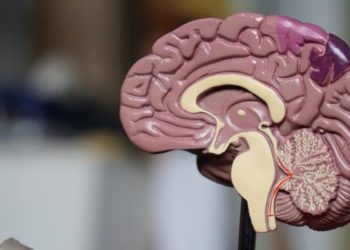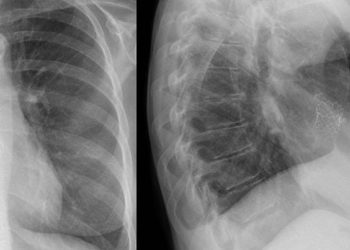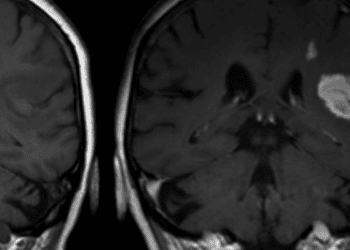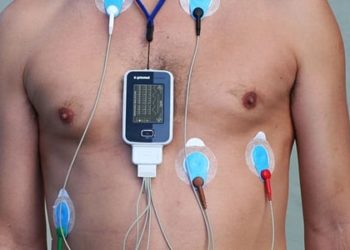2 Minute Medicine Rewind June 8 – June 14, 2015
Traumatic Spinal Cord Injury in the United States, 1993-2012
Traumatic spinal cord injury is a significant cause of morbidity and mortality that requires long term rehabilitation and can result in significant healthcare expenditure. In this retrospective analysis of data from the National Inpatient Sample, investigators looked at 63,109 patients from 1993-2012 with acute traumatic spinal cord injury. It was estimated that there was 53-54 cases per 1 million person-years throughout the study period, without significant variation over time. Over the time period, older patients, such as men between the ages of 65 to 74, experienced the greatest increase in incidence (from 84 cases/million in 1993 to 131 cases/million in 2012). Older patients had higher rates of in-hospital mortality and given changing populations over time, overall in-hospital mortality increased over time (6.6% in 1993-1996 to 7.5% in 2010-2012, p < 0.001). There still continues to be significant in-hospital mortality in older patients. A higher proportion of cases are associated with falls.
Stent-Retriever Thrombectomy after Intravenous t-PA vs. t-PA Alone in Stroke
The optimal management of acute ischemic stroke is still under investigation as previous studies have looked at the window to intravenous tissue plasminogen activator (t-PA) as well as thrombectomy. There still exists significant morbidity after treatment with t-PA alone, even in the most conservative windows of treatment. For patients with proximal anterior intracranial circulation occlusions, investigators studied the concomitant use of thrombectomy with t-PA. In this multinational randomized control study, 196 patients with proximal anterior intracranial circulation occlusions and receiving t-PA within 6 hours of symptom onset were randomized undergo endovascular thrombectomy or continue t-PA. The study was stopped early because of significant improvement in the thrombectomy group in 90 day modified Rankin scale scores (p < 0.001) and improvement in functional independence (60% vs. 35 %, p < 0.001). There was no statistically significant difference in 90 day mortality or symptomatic intracranial hemorrhage. This study suggests endovascular intervention on the proximal anterior circulation within 6 hours improve functional outcomes in acute ischemic stroke.
Individuals with chronic myeloproliferative neoplasms are at higher risk for independent new solid and hematological malignancies, however it has not been well studied how this affects outcomes. In this retrospective case-cohort study, investigators used population medical records in Denmark from 1980 to 2011 to compare patients with cancer and preceding myeloproliferative disorder to similar patients matched by age, sex, year of diagnosis, and cancer type. In this study, the investigators identified 1246 patients with myeloproliferative disorders and cancer and matched 5155 similar patients without preceding myeloproliferative disorders. For patients with solid cancers, overall 5 year survival was 49.8% vs. 72.4% for patients with essential thrombocytopenia compared to patients without, 47.9% vs. 63.9% for patients with polycythemia vera compared to patients without, and 48.0% vs. 74.3% for patients with chronic myeloid leukemia compared to patients without. The risk of death was 1.21 to 2.28 times higher for patients with preceding myeloproliferative disorders, independent of how long they had the diagnosis of the preceding myeloproliferative disorder. This study suggests that preceding myeloproliferative disorder is a poor prognostic factor in patients with other cancers.
Statin Therapy and Risk of Acute Memory Impairment
There exists evidence that lipid lowering drugs (LLDs) can cause acute and chronic neurological impairment. As new highly effective medications can dramatically lower low-density lipoprotein (LDL) cholesterol, there is increased interest in the neurological side-effect profile of LLDs. In this retrospective cohort, investigators looked at the Health Improvement Network database to compare 482,543 statin users with 26,484 users of nonstatin LDDs, and 382,543 matched non-users. Investigators found a strong association with first exposure to statins and incident acute memory loss diagnosed within 30 days following exposure (adjusted OR 4.40, 95% CI 3.01-6.41). There was a similar affect comparing statin users and nonstatin LLDs users (adjusted OR 1.03, 95% CI 0.63-1.66). This study suggests that lipid lowering drugs are linked with acute memory loss regardless of drug class, though further randomized evaluation is needed.
Anticoagulation for atrial fibrillation weighs the risks of life threatening bleeding with the benefits of preventing thromboembolic phenomena such as acute ischemic stroke. For patients with acute intracranial hemorrhage, a life threatening complication, it is often unclear whether to or when to restart anticoagulation for atrial fibrillation. In this retrospective analysis of three national Danish registries, investigators identified 1752 patients with acute intracranial hemorrhage between 1997 and 2013 and compared outcomes after restarting oral anticoagulant therapy, antiplatelet therapy, or no treatment. At one year of follow-up, all cause mortality was 13.6 per 100 person-years for patients restarted on oral anticoagulation, 25.7 for patients with antiplatelet therapy, and 27.3 for patients without treatment. The rates of recurrent intracranial hemorrhage were not increased (8.0 per 100 person-years for oral anticoagulation, 5.3 for antiplatelet therapy, and 8.6 for without treatment). This study suggests the benefits outweigh the risks in restarting oral anticoagulation after intracranial hemorrhage.
Image: CC/Wiki
©2015 2 Minute Medicine, Inc. All rights reserved. No works may be reproduced without expressed written consent from 2 Minute Medicine, Inc. Inquire about licensing here. No article should be construed as medical advice and is not intended as such by the authors or by 2 Minute Medicine, Inc.






